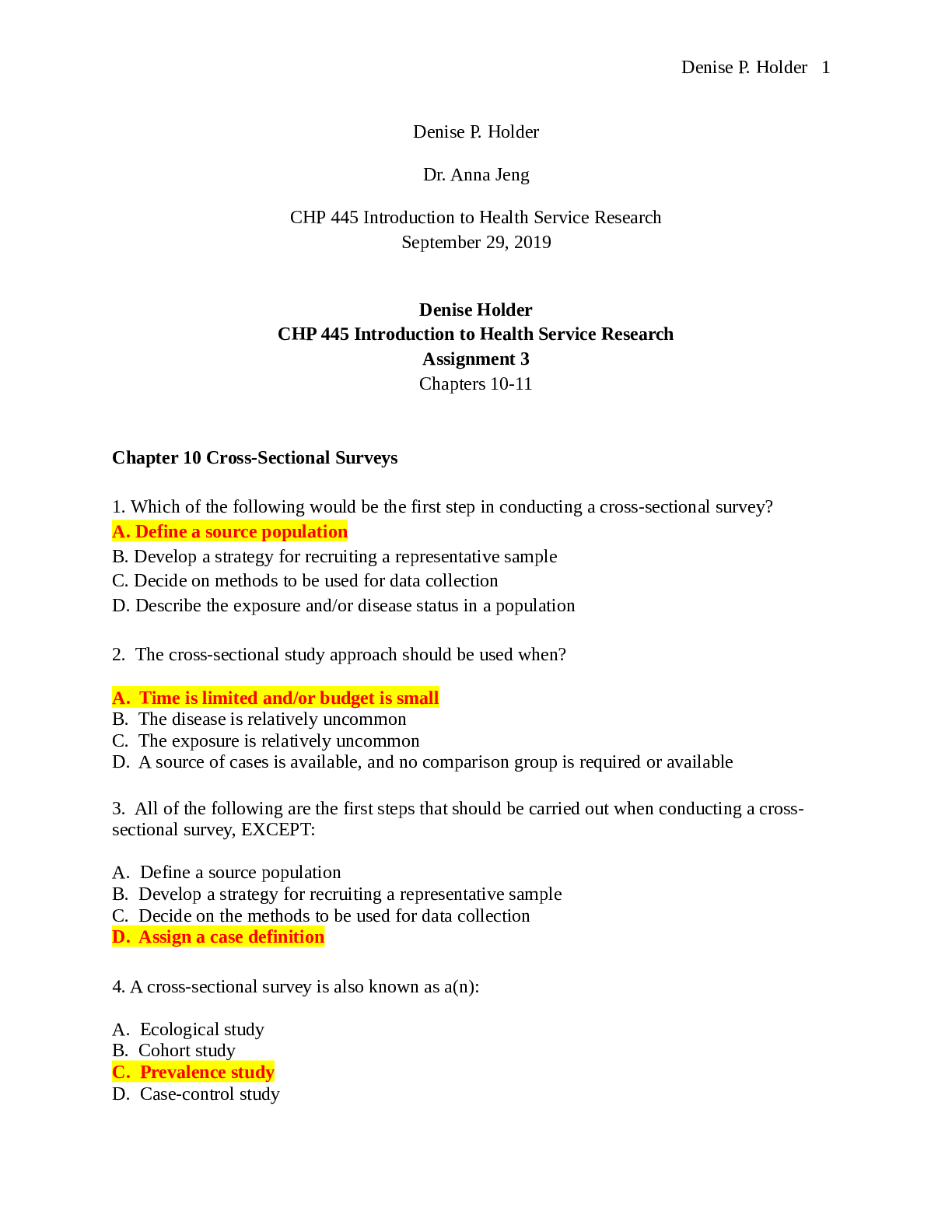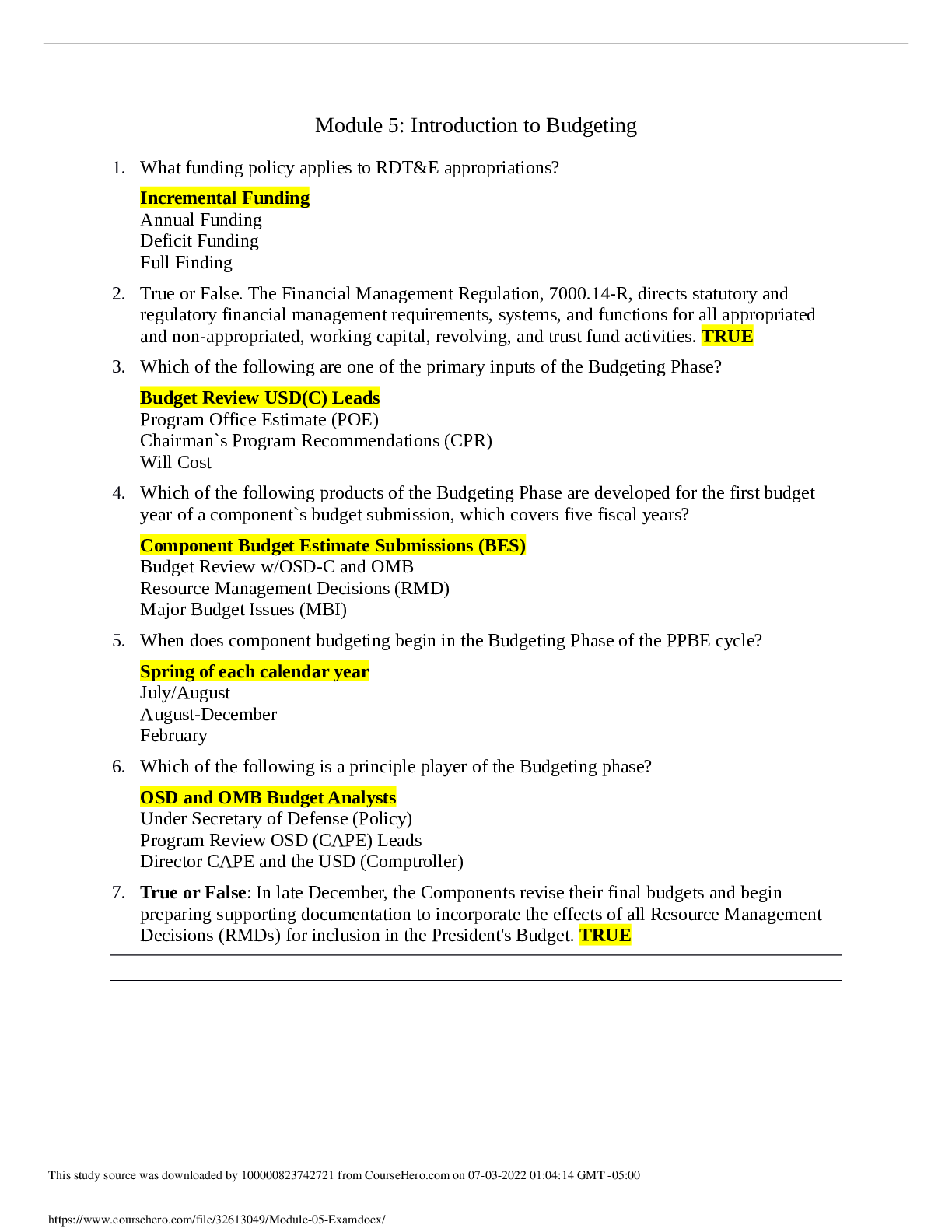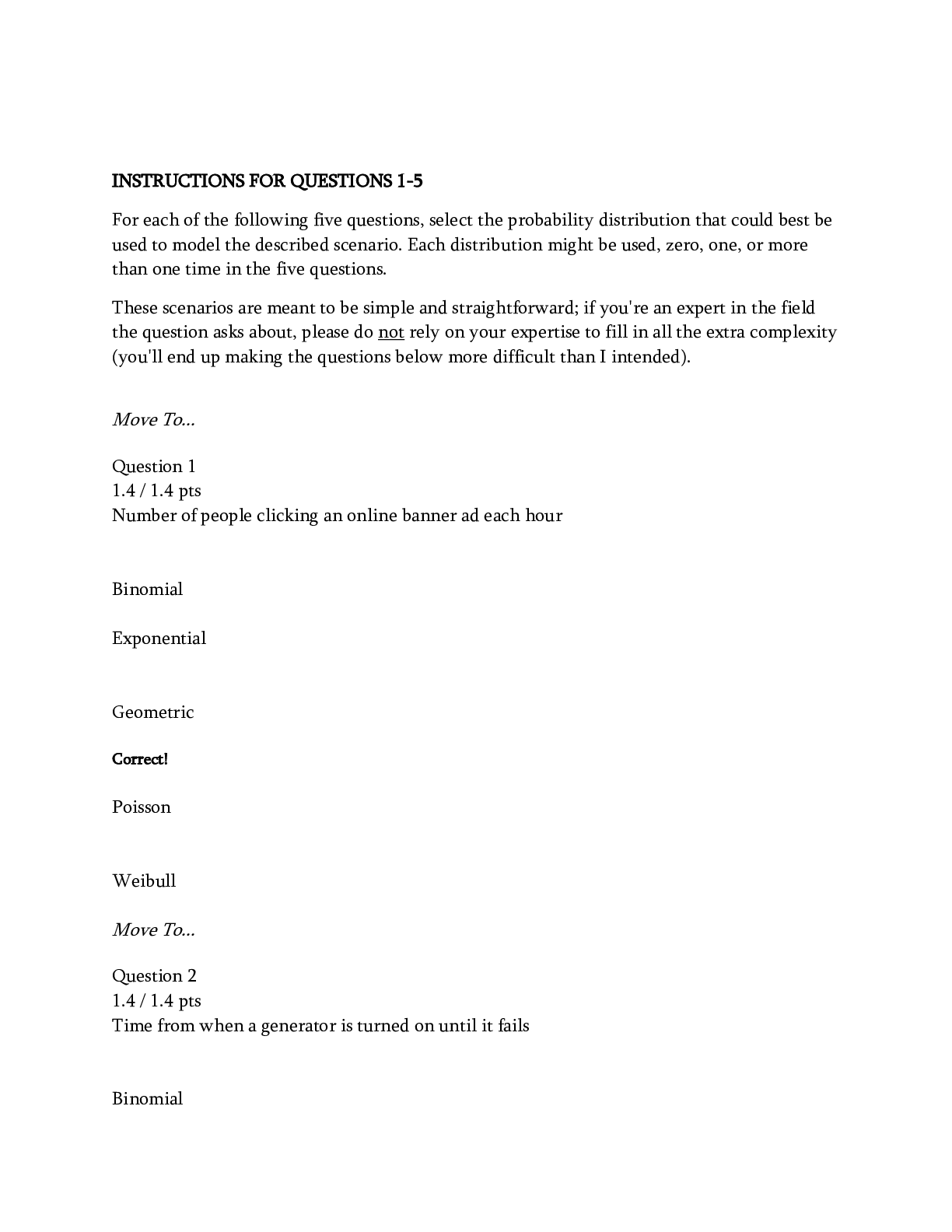Pharmacology > QUESTIONS & ANSWERS > Assessment 1 Introduction to Pharmacology (All)
Assessment 1 Introduction to Pharmacology
Document Content and Description Below
Assessment 1 Introduction to Pharmacology 1. A client asks you about the difference between a generic drug and a trade or brand-name drug. Which of the following are true regarding generic drugs? ... a. Have the potential for abuse and dependence b. Have the same chemical composition as the brand-name drug c. May have several brand names d. May have several generic names e. Are usually less expensive than a brand-name drug 2. Match word to definition a. Metabolism – the change of a drug into a more or less potent or more soluble form after it passes through the liver, kidneys, intestinal mucosa, or other body part b. Distribution – the movement of a drug by the circulatory system to its intended site of action c. Excretion – the removal of the drug or its metabolites through the kidneys, GI tract, skin, or lungs d. Absorption – the movement of a drug from the site of administration into the circulatory system 3. A client with glaucoma asks you about taking oxybutynin, a muscarinic antagonist, to manage an overactive bladder. You explain that glaucoma is a contraindication for taking oxybutynin. Primary care providers should not prescribe contraindicated drugs because of their potential for which of the following? a. Serious adverse reactions b. Drug tolerance – a decreased response to a drug over a period of time c. Drug dependence – a physiologic or psychologic need for a drug d. Interactions with other drugs – an alteration in the expected pharmacologic action of a drug that results from an interaction with another drug 4. Match word to definition a. Trough drug level – the point in time when a drug is at its lowest level in the body b. Onset of action – the time it takes for a drug to demonstrate a therapeutic response c. Duration of action – the length of time the drug’s therapeutic effect lasts d. Peak drug level – the time it takes a drug to demonstrate its full therapeutic effect 5. You note that a primary care provider prescribed morphine sulfate, an opioid agonist, to relieve a client’s postoperative pain. Which of the following actions describes the action of an agonist on a receptor? a. Destroys the receptor b. Competes with the receptor – competitive antagonists c. Activates the receptor – agonists bind with receptor sites & activate them to produce a response d. Blocks the receptor – antagonists block drugs from receptor sites (blocks drug’s intended action) 6. A client who has a peanut allergy comes to the emergency department with suspected anaphylactic shock. Which of the following actions should you anticipate taking? (select all that apply) a. Initiate oxygen therapy to support respiratory function b. Administer epinephrine to increase blood pressure c. Give diphenhydramine to stop histamine release d. Establish and maintain an open airway to ensure oxygenation – priority e. Administer a drug agonist to neutralize the allergic reaction – elicits an action in the body instead of blocking an action 7. You are talking with a client about taking tetracycline along with an antacid. You tell the client not to take these two drugs at the same time because the antacid can reduce the absorption of tetracycline. When one drug reduces the effect of another drug, it is: a. An allergic reaction – response to a drug by the release of histamine causing itching and hives b. A synergistic effect – drugs that interact, causing greatly increased or exaggerated effects c. An antagonistic effect d. An adverse reaction – nontherapeutic, unintended effects of a drug occuring at a therapeutic dose 8. Primary care providers prescribe drug dosages for children using which of the following information? (select all that apply) a. Body surface area b. Age c. Weight d. Developmental level e. Drug properties 9. An older client may be at risk for drug toxicity due to which of the following physiologic changes associated with aging? a. Reduced hepatic blood flow b. Increased glomerular filtration rate (decreased in older adults) c. Reduced body fat (increased in older adults) d. Increased gastric motility (decreased in older adults – slowed peristalsis, decreased CO) 10. You are helping a client learn how to give himself an insulin injection. Which of the following is the best method for evaluating effective learning? a. Verbally quiz a family member b. Instruct the client to complete a written test c. Have the client demonstrate an insulin injection d. Ask the client several key questions about the procedure 11. A nurse is reviewing drugs in a drug reference. The nurse should identify that drugs in the same class share which of the following similarities? a. They have similar mechanisms of actions (as well as assessment guidelines, interactions, and precautions) b. They have the same half-life c. They are administered by the same route d. They have similar availability 12. A nurse is caring for a client who was prescribed an antidepressant based on its ability to prevent the reuptake of neurotransmitters. The nurse should identify that which of the following terms describes why this drug was prescribed for the client? a. Pharmacologic action – the mechanism of action of a drug on the body to achieve a desired effect b. Chemical stability – knowledge of how a drug should be stored and handled to maintain maximum effectiveness c. Route – the method of administering the drug d. Adverse effects – the unintended and undesired effects that drugs have on the body 13. A nurse is caring for a client who is having difficulty remembering to take their prescribed drug three times each day. The nurse should identify that which of the following alternate forms of the drug can help to promote adherence to the prescribed dosage? a. Liquid suspension – absorption is rapid; taken at frequent intervals b. Immediate-release capsule – absorption is rapid; taken at frequent intervals c. Extended-release tablet – taken less frequently d. Powder form – absorption is rapid; taken at frequent intervals 14. A nurse is providing teaching to a pregnant client who is taking captopril, an ACE inhibitor, to treat hypertension. The nurse informs the client that captopril is a teratogenic drug. The nurse should explain that teratogenic drugs can cause which of the following? a. Maternal bleeding – caused by anticoagulants b. Maternal blood clots – increased risk by hormonal preparations c. Gestational diabetes mellitus – caused by hormones produced during pregnancy blocking the action of insulin d. Fetal malformation – birth defects 15. A nurse is preparing to administer a drug to a client. In which of the following sections of a drug handbook should the nurse look to determine if the drug has more than one use? a. Adverse effects b. Indications c. Pharmacokinetics d. Nursing implications 16. A nurse is teaching a client about naproxen enteric-coated tablets. Which of the following statements should the nurse include in the teaching? a. “Drug absorption occurs in the stomach” – absorbed in the small intestine b. “You should expect immediate absorption of the drug” – slows absorption c. “You should allow the tablet to dissolve in your mouth” – dissolving destroys protective coating d. “Do not crush or chew the tablet” 17. When reviewing a list of drugs in a handbook, a nurse can identify that generic name for a drug in which of the following ways? a. It begins with a lower-case letter b. It is listed in parentheses along with the trade name – trade names are in () c. There are both letters and numbers in the name – chemical identifier d. The chemica [Show More]
Last updated: 1 year ago
Preview 1 out of 21 pages
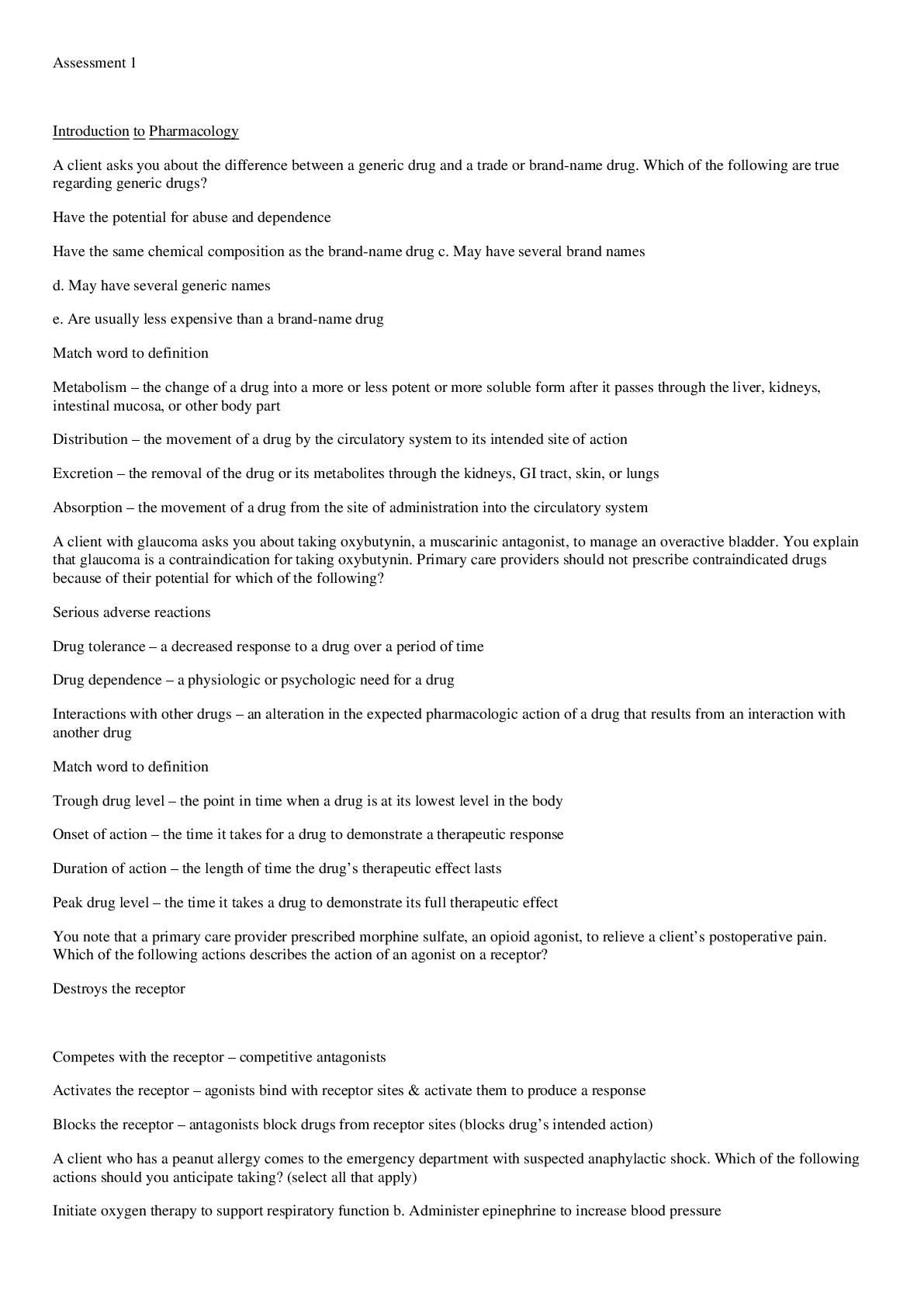
Reviews( 0 )
Document information
Connected school, study & course
About the document
Uploaded On
Mar 13, 2023
Number of pages
21
Written in
Additional information
This document has been written for:
Uploaded
Mar 13, 2023
Downloads
0
Views
30

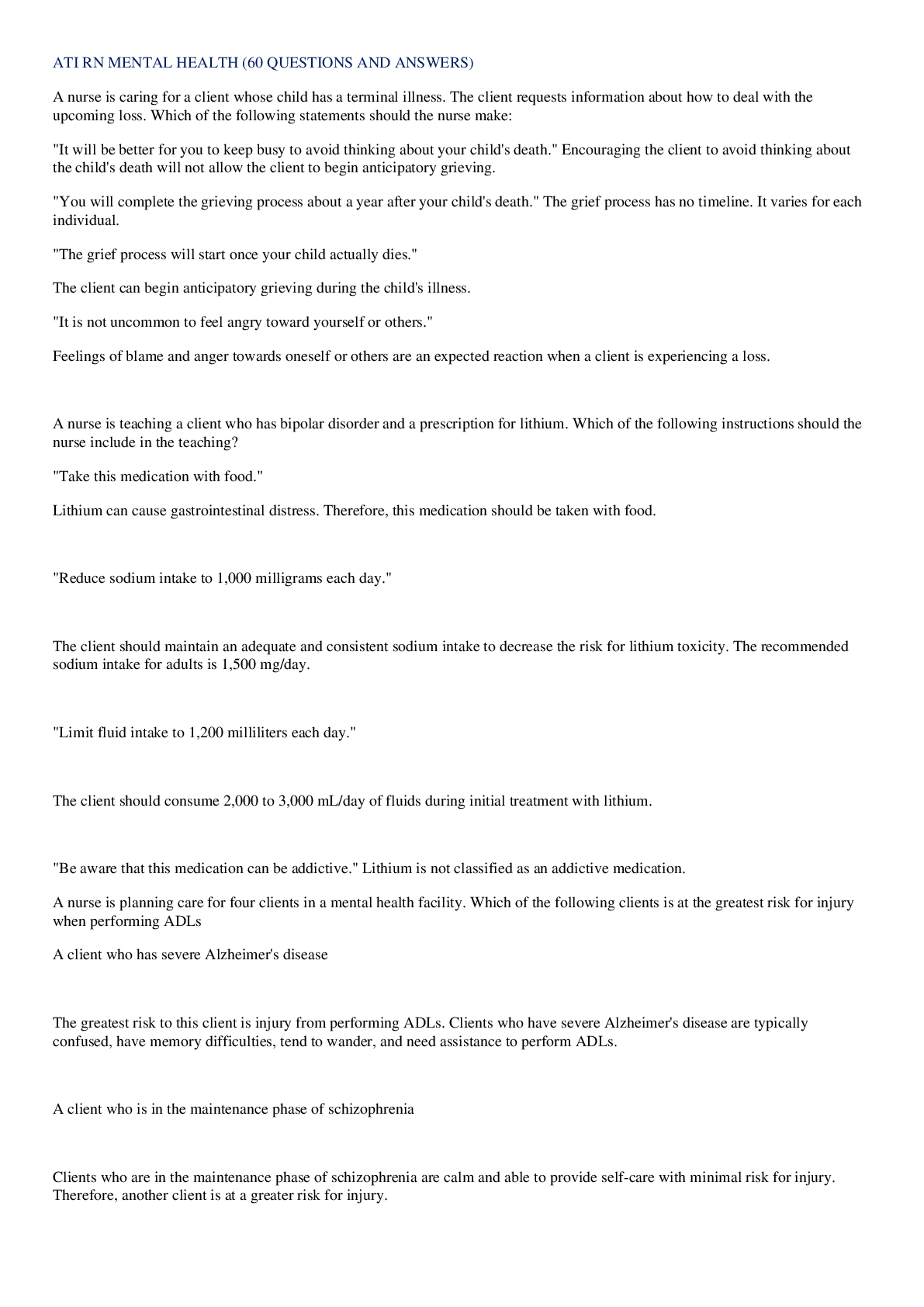


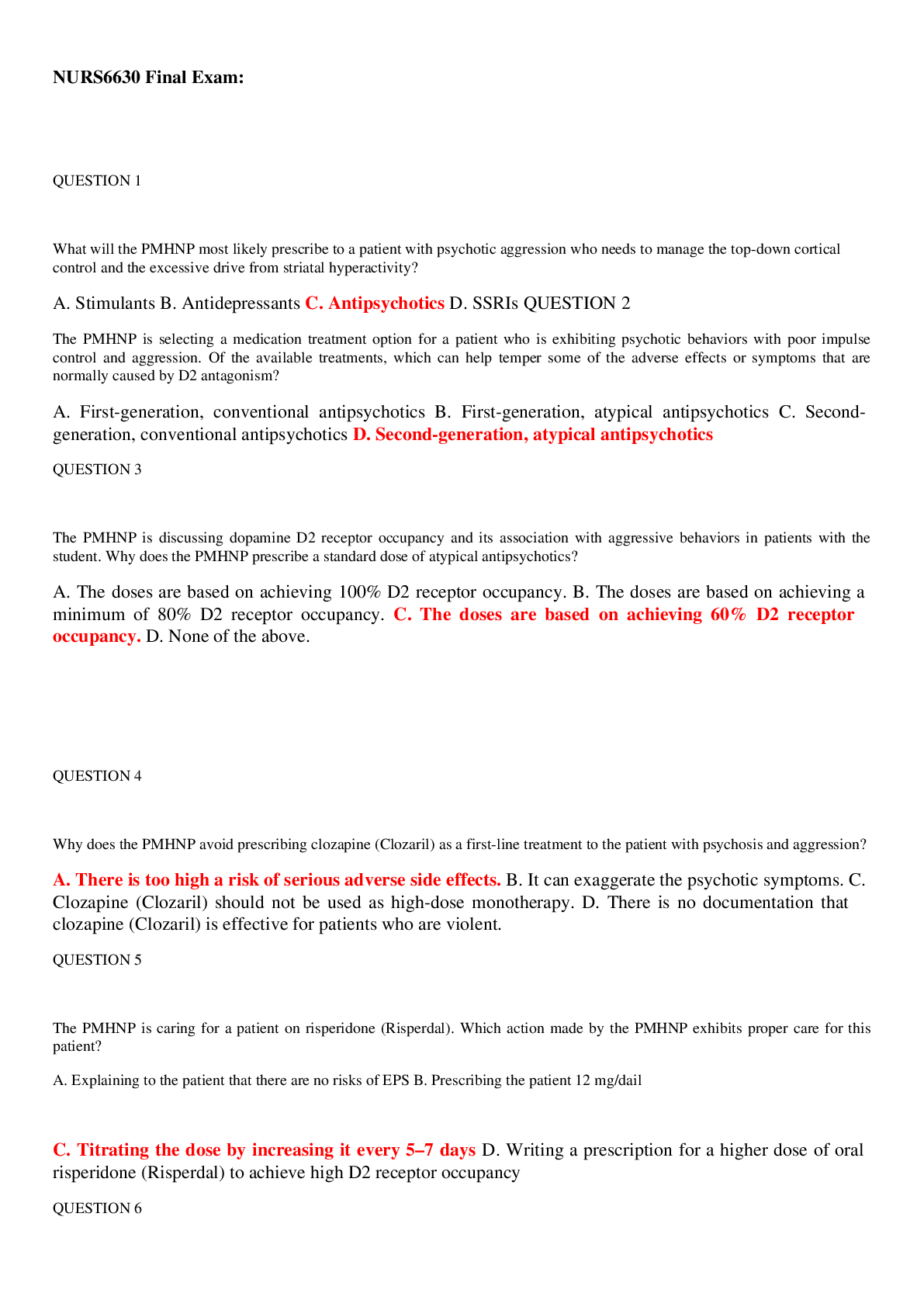




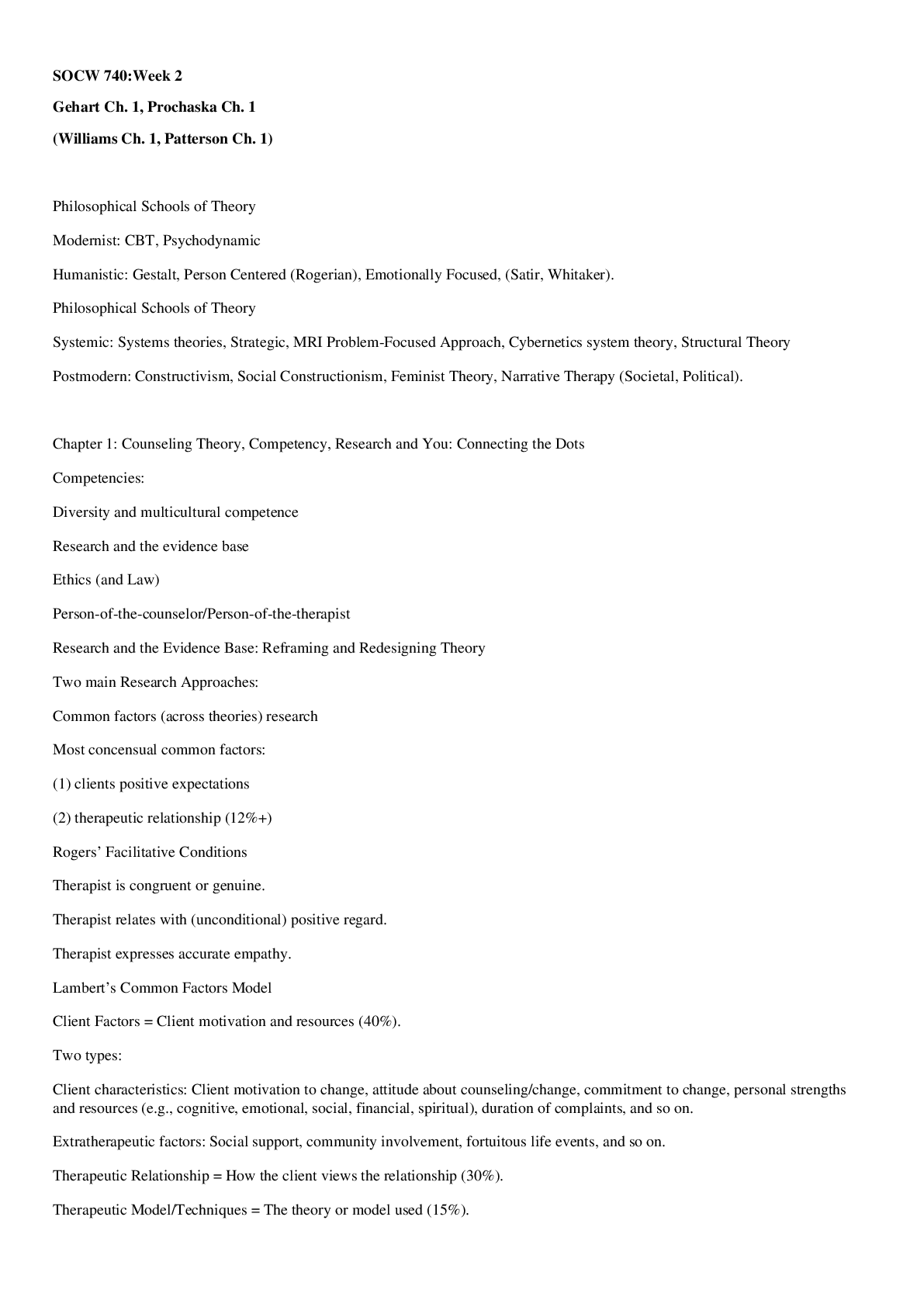



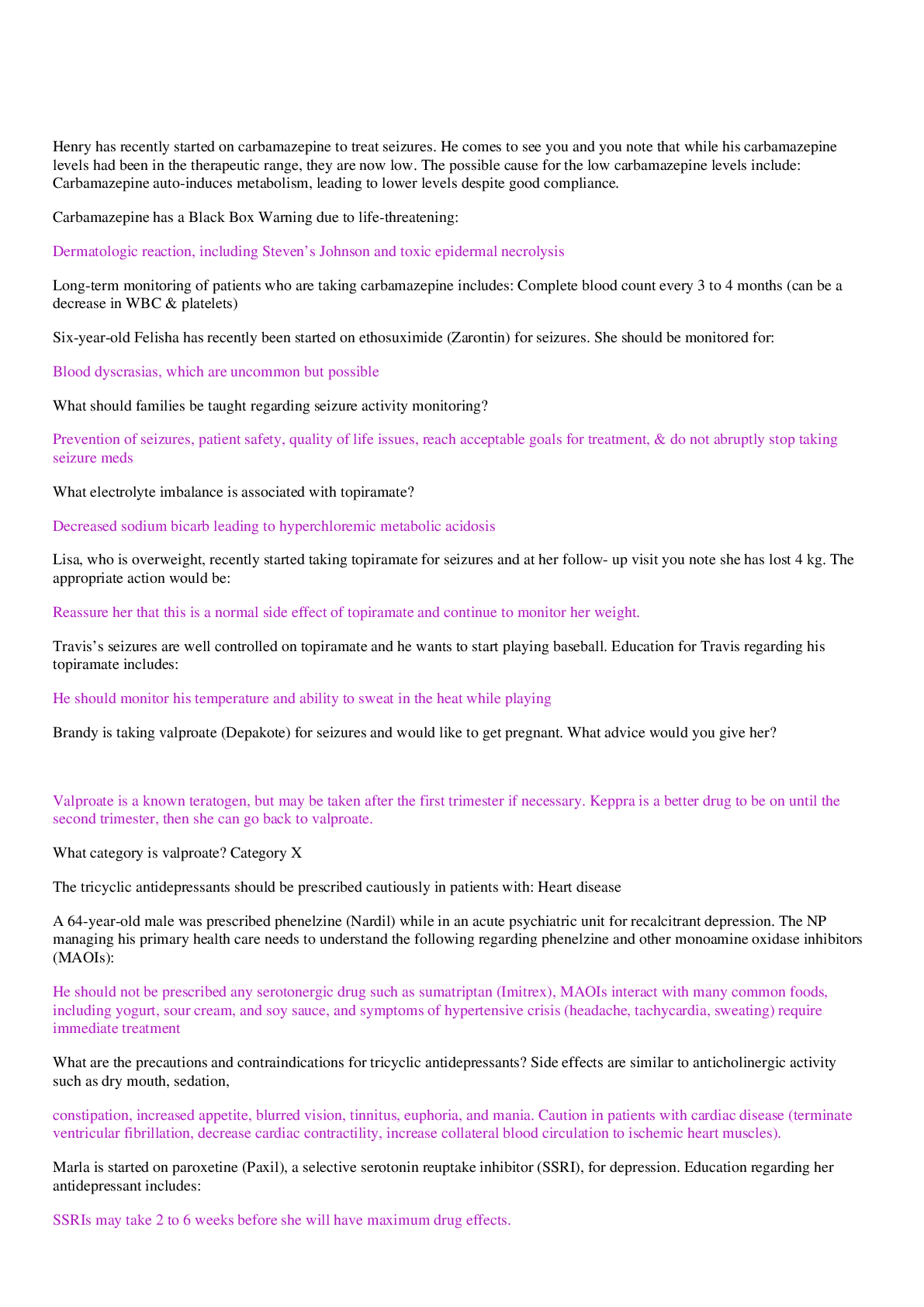
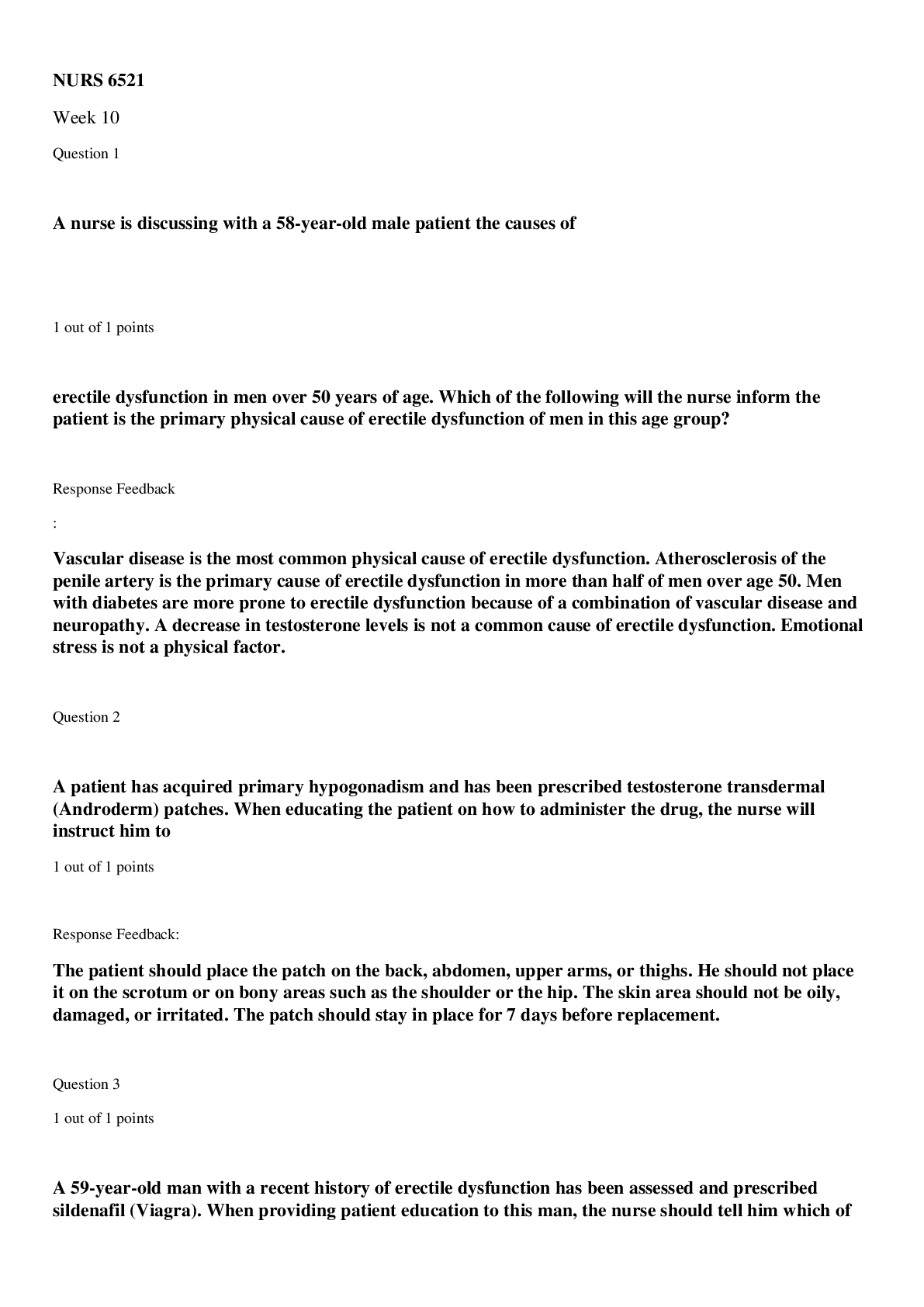
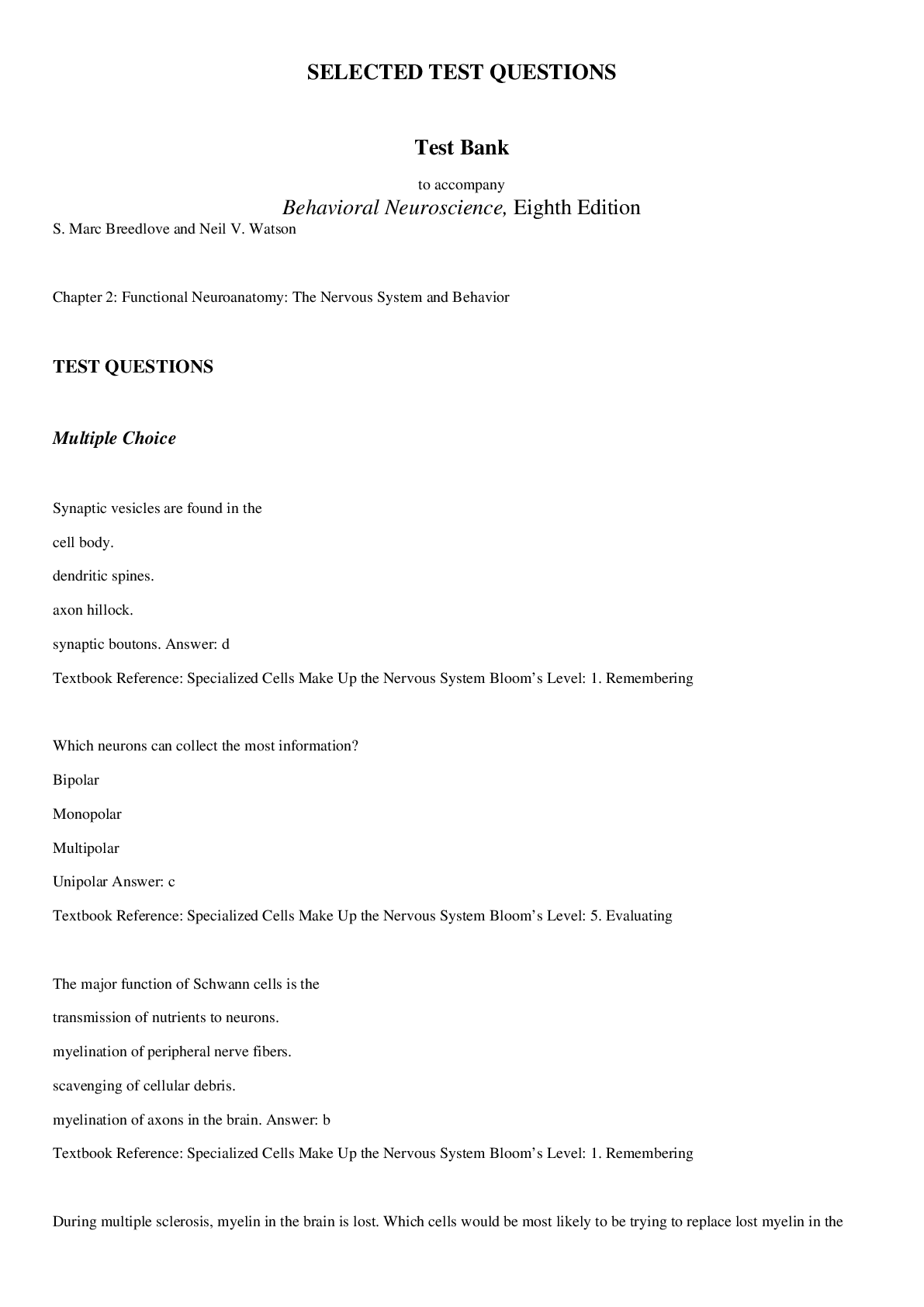

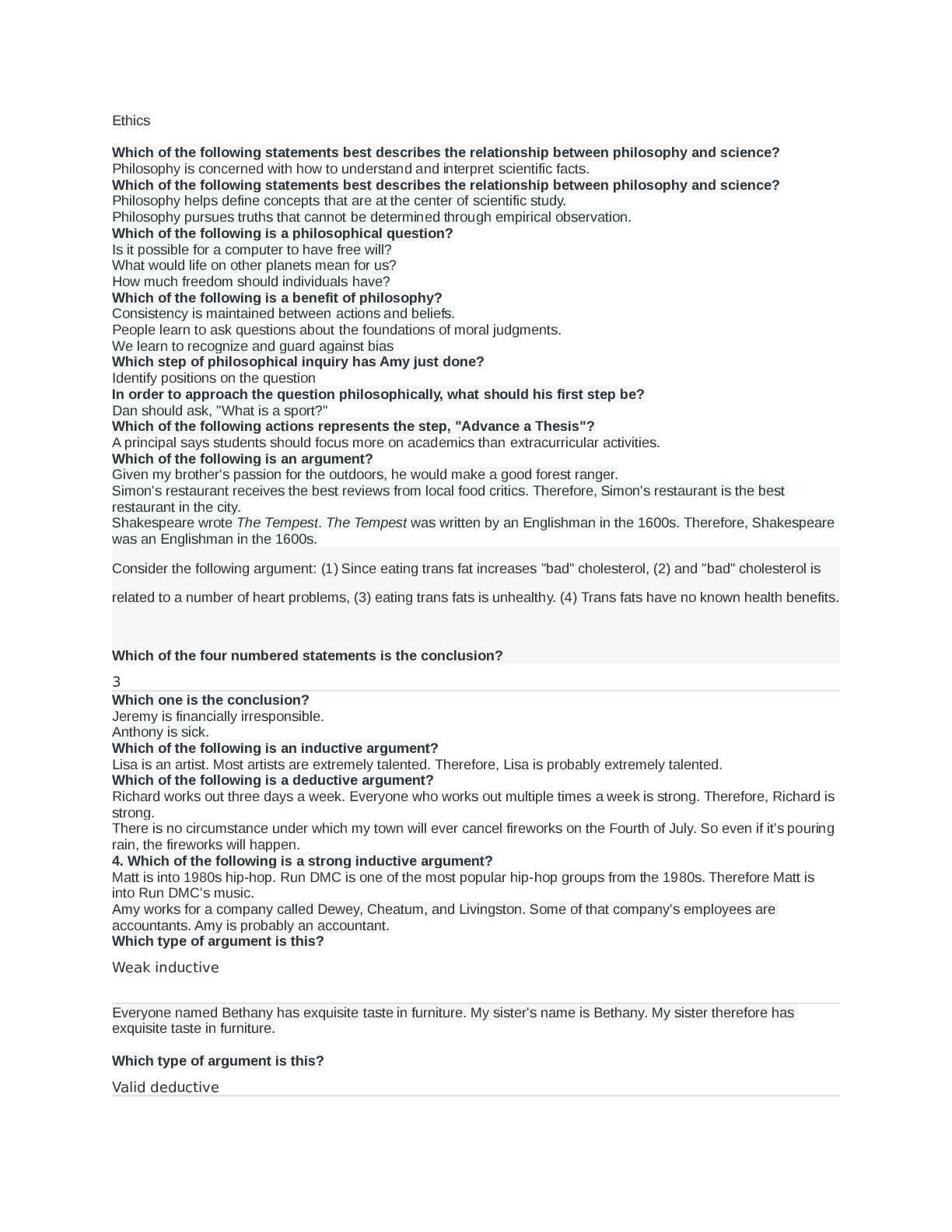
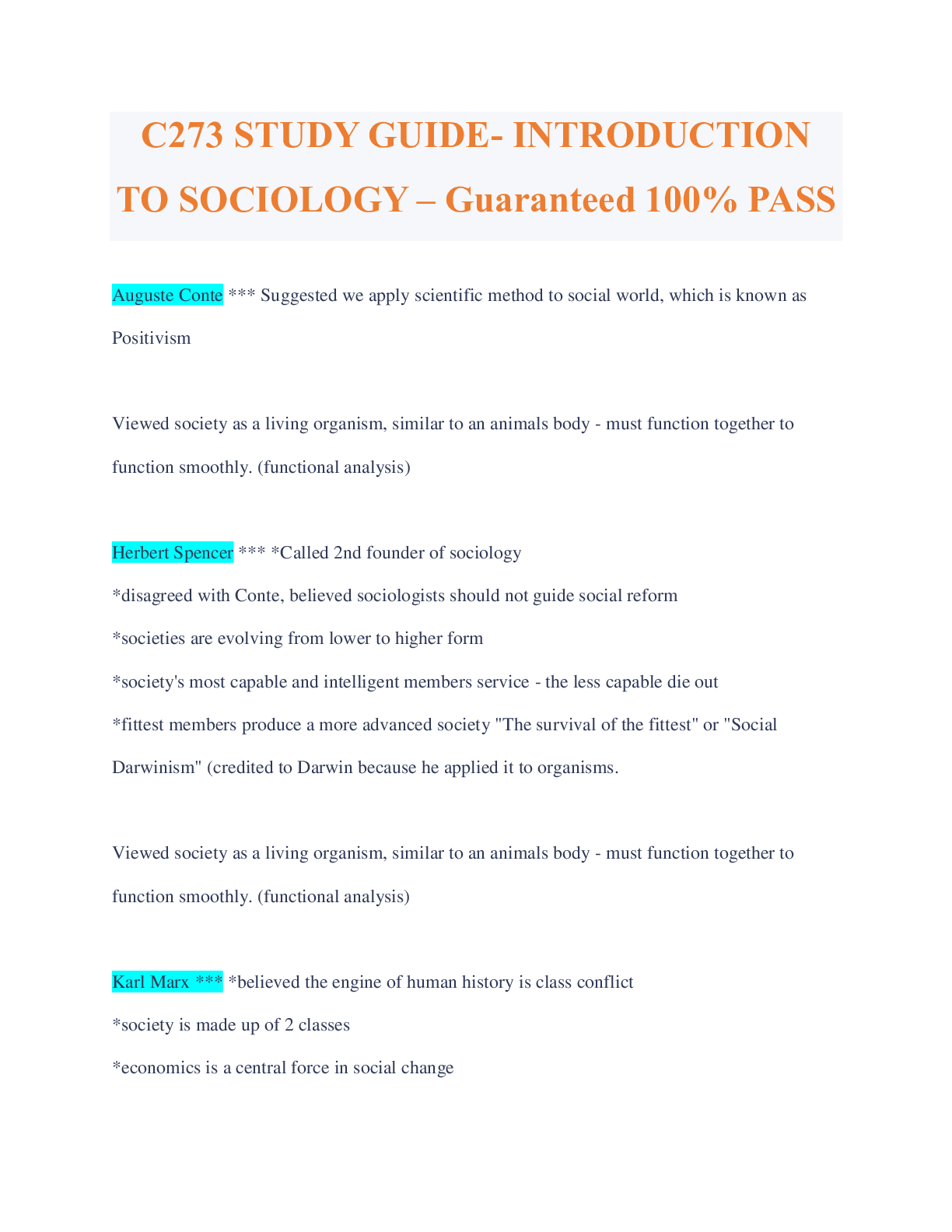
.png)
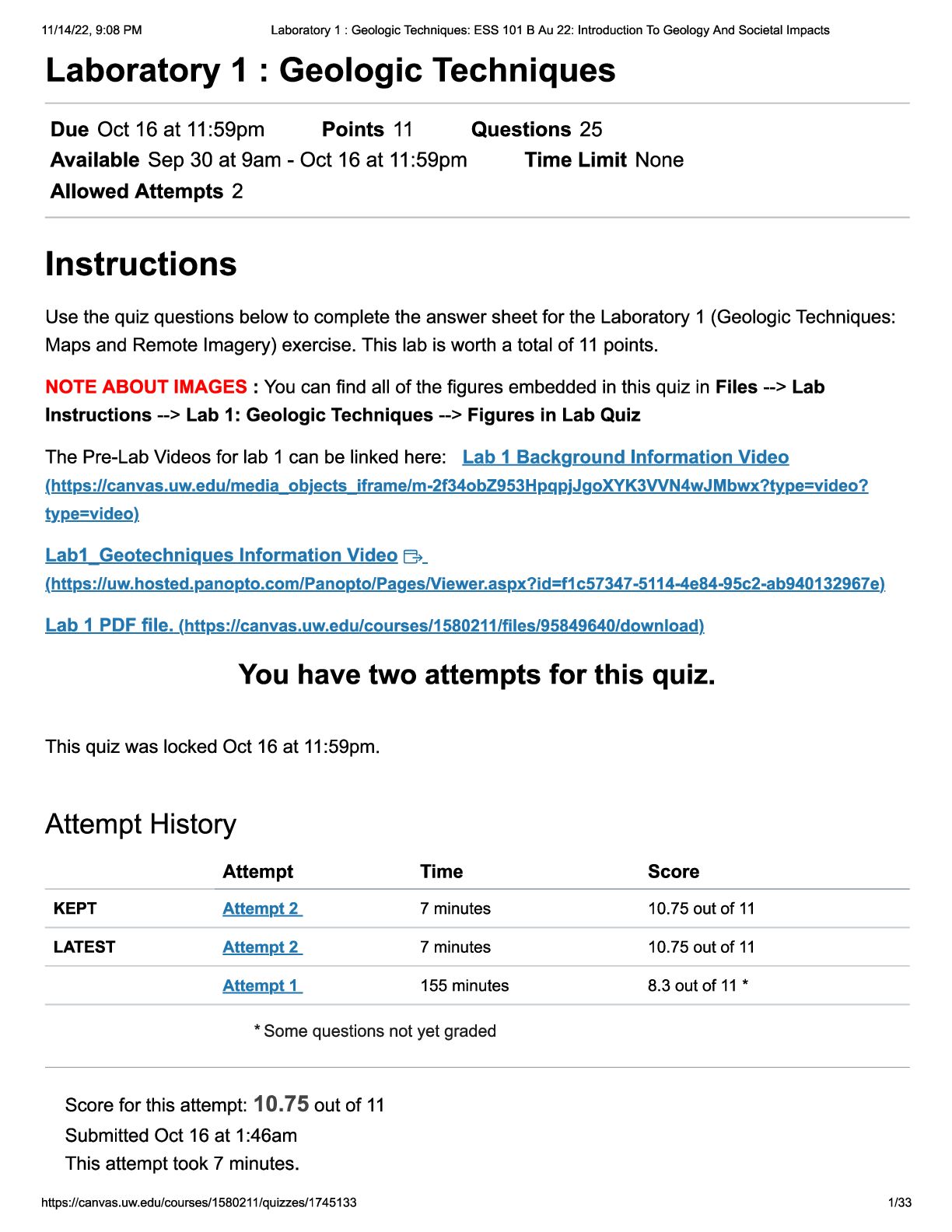
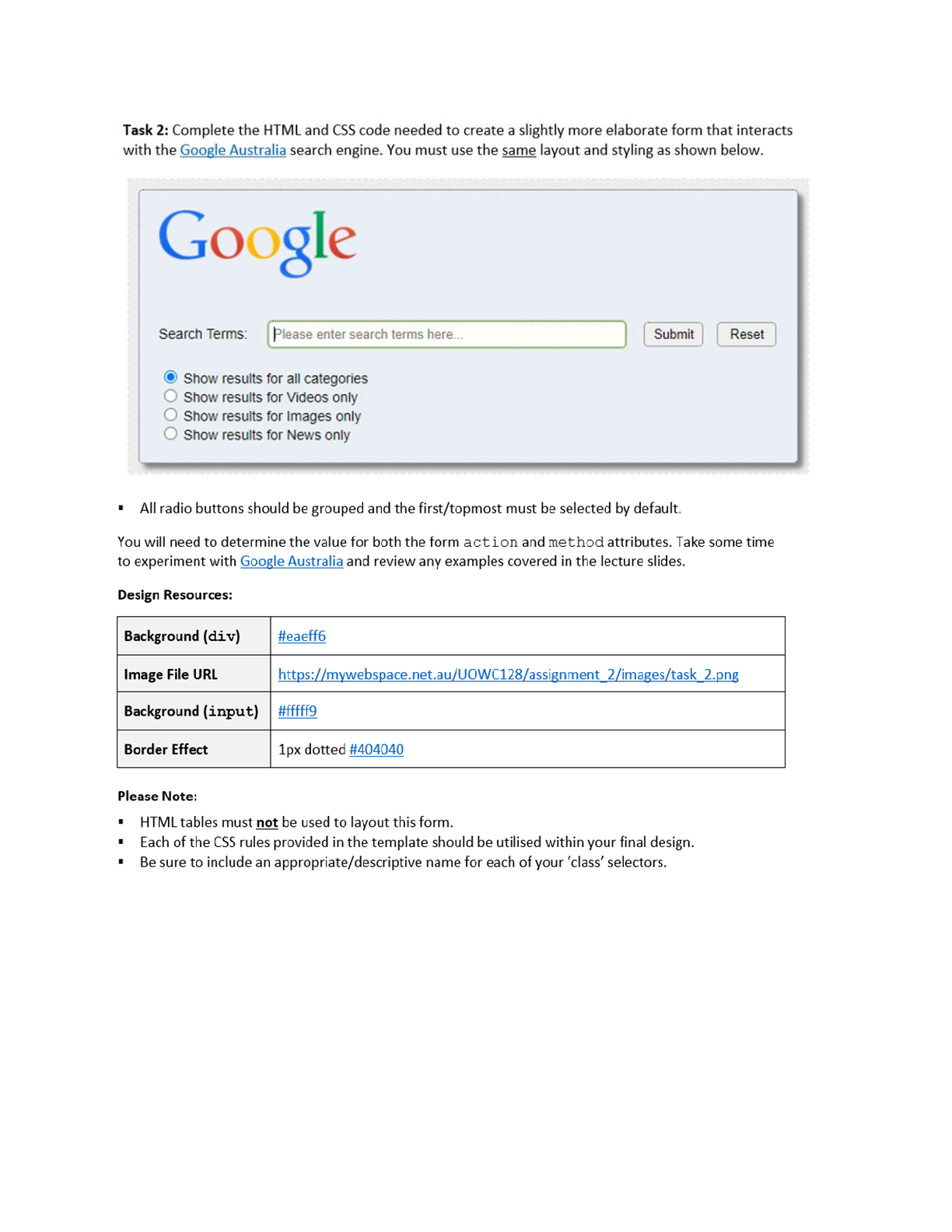
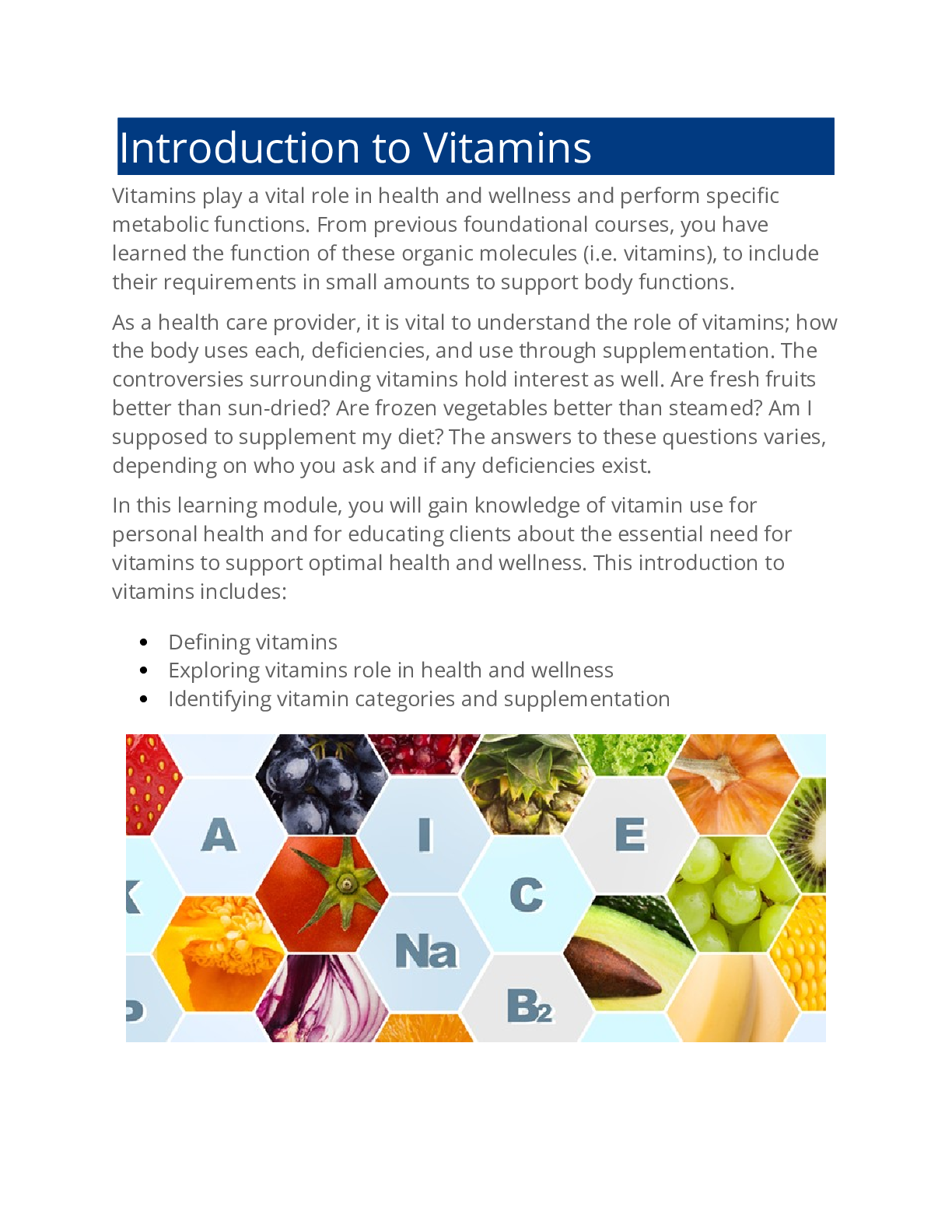

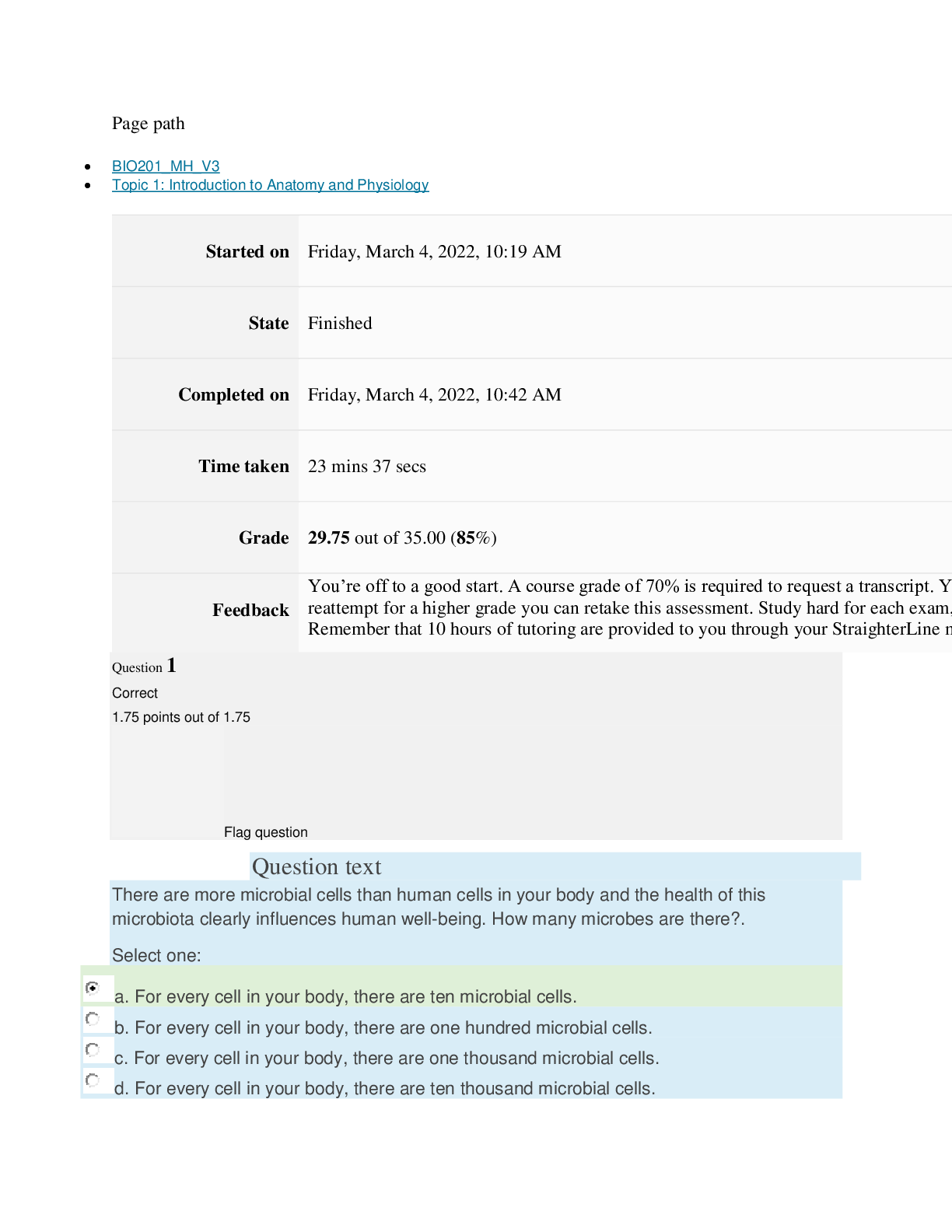


 (1).png)
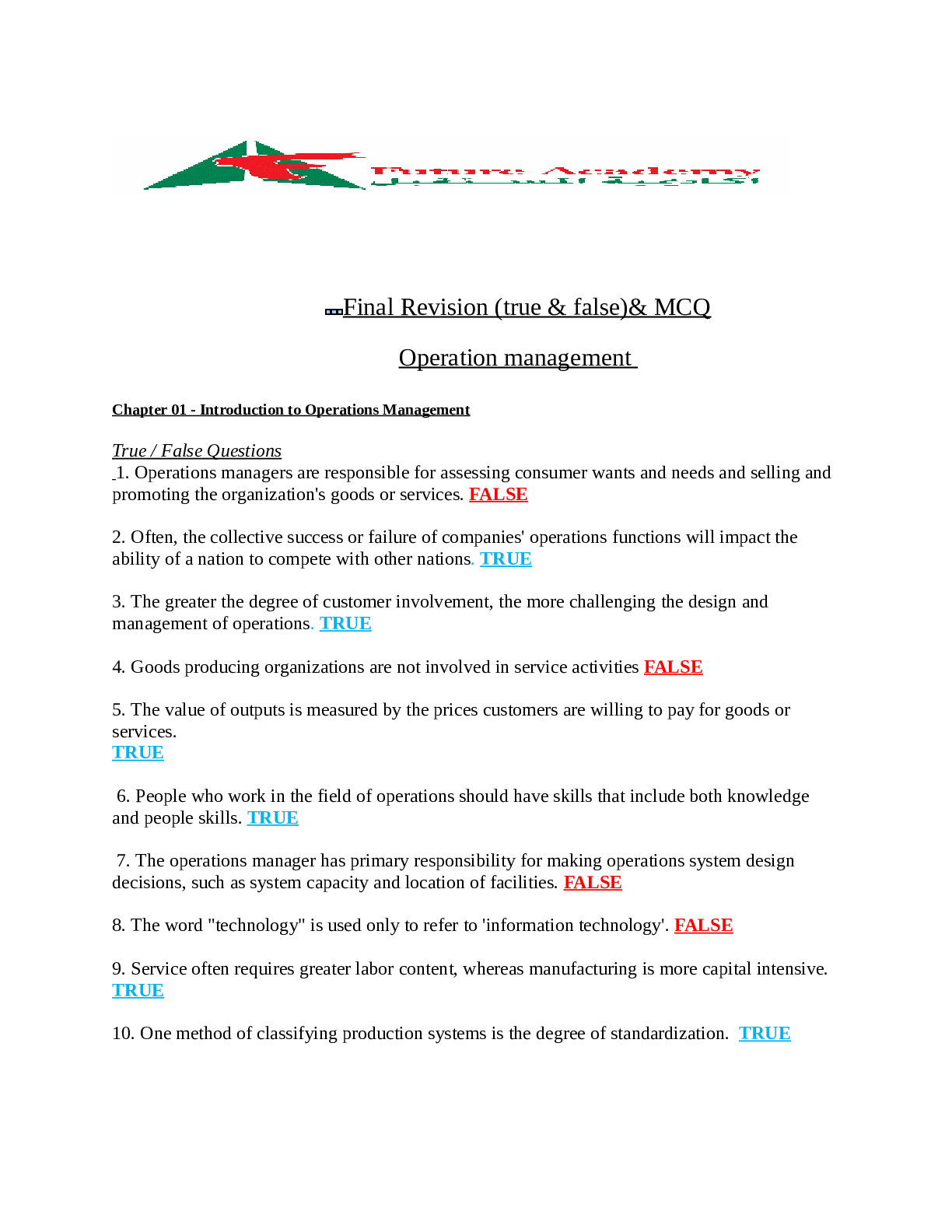
.png)

.png)
